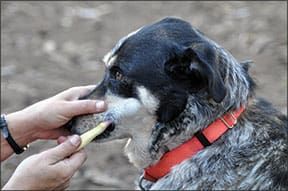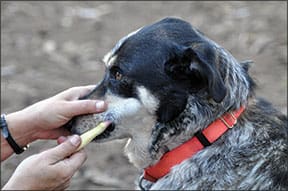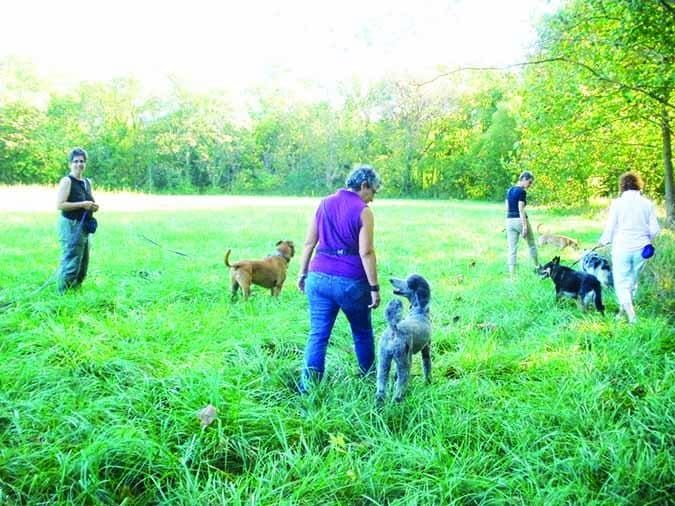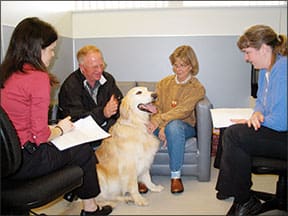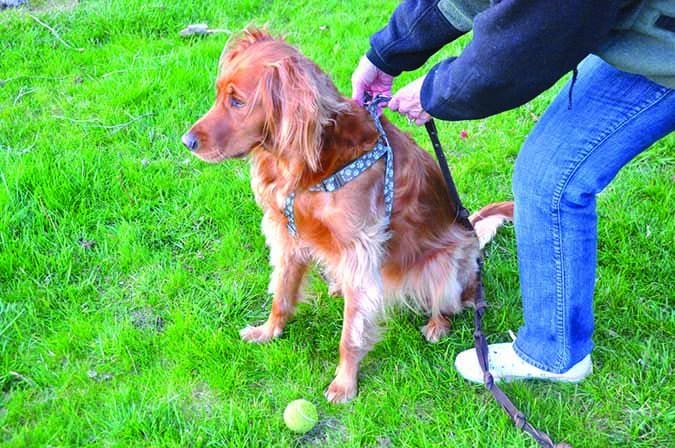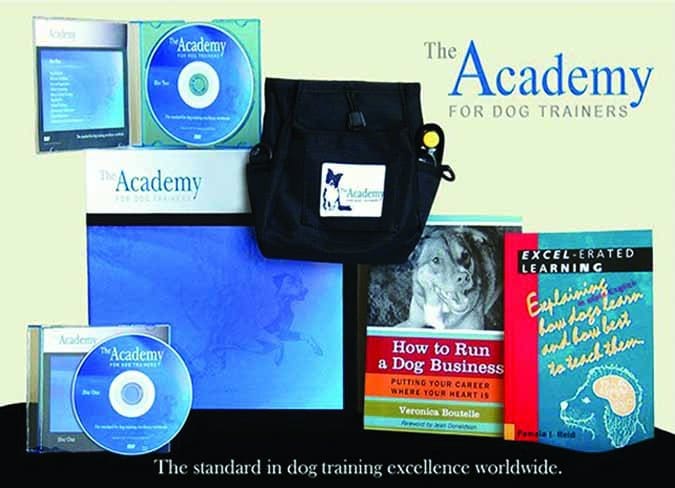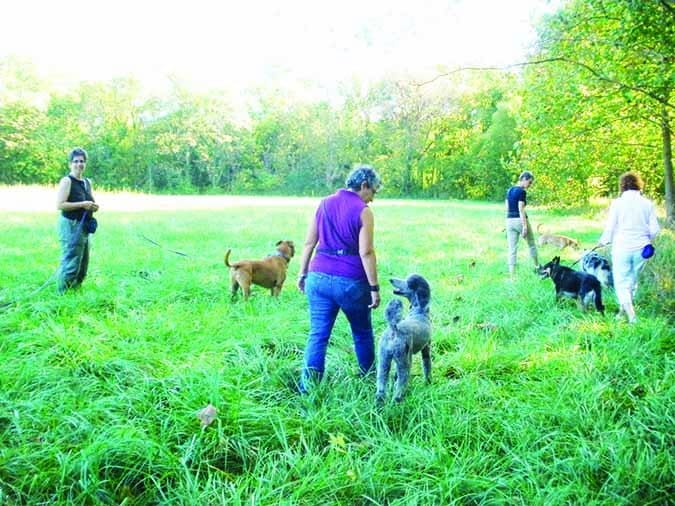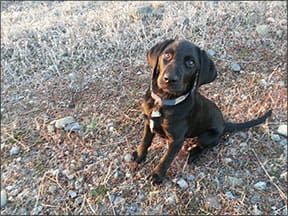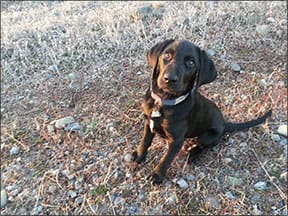We’ve reviewed dog foods annually for 17 years now, and we try, every year, to tell you something new about the food you feed (or should be feeding!) your dog, something you may not have known before. We also tell you how we define and identify good-quality foods, and how to tell them apart from the products of lesser quality. And finally, we give you a list of foods that meet all of our selection criteria and meet our approval. We’re doing all that again this year, but in a slightly different format.
There are a lot of different factors that should be considered when selecting the right food for your dog. The most important ones, in our opinion, are the ingredients in the food themselves, which is why we spend so much time through the course of the year and space in the magazine talking about dog food ingredients. On the facing page, we have again listed the “things to look for” (desirable traits) on a dog food ingredients list, as well as “things to look out for” (undesirable traits). This really is the most important information to know about choosing good (healthy) dog foods.
If a food doesn’t have good ingredients, there is no point in talking about where it’s made, where you have to go to buy it, whether it is grain-free or not, how much fat is in it, whether the company that makes it has ever had a recall, or how much it costs. Learning to look at the ingredients panel before you buy is half the battle; the other half is identifying good ingredients (so you can buy that food) and bad ingredients (so you can avoid buying that food).
For some of you, this will be brand-new information. If you’ve never before looked past the pretty pictures on the label of your dog’s food – the juicy steaks, glistening cubes of pink chicken breast, dewy carrots, steaming bowls of rice, and so on – to look at the extremely fine print of the actual ingredients list, you may be shocked to see that what’s actually in the bag is mostly corn, with steak flavor, chicken by-product meal, carrot powder, and brewers rice.
Those of you veteran label readers, we salute you! Your reward is a lot of new information about the foods you should (if you don’t already) love, buy, and feed your dog (shouldn’t all of those always be the same thing?).
The Whole Dog Journal Approved Dry Dog Food Chart Explained
So, trying to mix things up and add to your store of knowledge about the products on our list of “Approved Dry Dog Foods for 2014,” we’ve put together a table of new information about these foods. Let’s walk through the information that is included on the table, so we can explain what we’ve added and why.
Dog Food Company Info
The foods that we like and that meet our selection criteria appear on the chart under their maker’s name. These companies are listed alphabetically. So, for example, please don’t freak out when you don’t see Orijen under the O’s; it’s listed under the name of the company that owns it: Champion Pet Foods.
Dog Food Manufacturing: Self or Co-pack?
Some companies own and operate their own manufacturing plants; some of these make only their own products, and others make their own and other companies’ foods, too. Other companies, especially the smaller ones, use “contract manufacturers,” a.k.a., “co-packers,” to make their foods for them. As we have observed many times, there are benefits and challenges of both arrangements.
When a company owns and operates its own plant, it has full control of the entire food-making process: sourcing ingredients and managing their in-flow and storage; hiring, training, and managing workers; equipment maintenance and cleaning; product testing (requiring at least a minimal lab and space and a system for retaining product samples); and so on. When things go wrong, there is no one to blame but yourself; on the other hand, if you are in full control of the whole process, and you know what you are doing, theoretically, you should be able to prevent things from going wrong.
But owning and running a plant is unthinkably costly; few small companies can afford the expense, so they contract the services of a co-packer.
When a pet food company does this, it can build as little or as much control or oversight of the manufacturing process into its contract as it likes. Some companies “leave it to the experts,” taking a hands-off approach to the production of its products, while others insist on things like sourcing its own ingredients and having a company representative present for every run of its products, from start to finish.
When a food company hires a competent, ethical contract manufacturer and is educated enough to provide meaningful oversight of the services it hired, the relationship can work out well for all concerned, including you and your dogs.
When we started our annual dry dog food reviews (some 17 years ago), pet food companies would not, did not, disclose where their products were made. “Proprietary information” was the perennial excuse – which made us crazy, because we suspected, and later learned we were correct, that all the companies absolutely knew where their competitors’ products were made; it was just us, the consumers, who weren’t supposed to know. But why? It never made sense to us. If you were proud of your manufacturer, why not tell the world?
This argument worked with some of the companies whose foods we admired – and we admired them even more for disclosing the information to us and consumers everywhere.
We had several reasons for wanting companies to disclose this. First, we wanted to see if there was a pattern; did all the best foods come from certain co-packers? Did the ones that were recalled originate from certain others?
We also hated the helpless feeling we had in 2007, when company after company announced that their products, too, were apparently adulterated with a substance that could sicken and kill dogs – and the companies whose names were on the label of the foods we were feeding our dogs wouldn’t tell us whether their products were manufactured in the same place as the location where all those first deadly foods were produced. That’s when we decided to draw a line in the sand and insist that if a company wouldn’t tell its consumers where its products were made, we wouldn’t include them on our “approved lists.”
The companies that already disclosed their manufacturing sites were thrilled; they hoped to see many of their competitors fall off our lists. But after coping with the outrage of the pet-owning public in the wake of the 2007 melamine disaster, few companies wanted to be called out for nondisclosure anymore, and almost every company on our previous “approved foods” lists disclosed their manufacturing sites then and has done so ever since.
There have been a couple of curious hold-outs – curious because in every other way, their products met all of our other selection criteria as quality foods: Halo and Newman’s Own. Both companies sell great products, interesting foods, and both have an impeccable record so far – no recalls for anything, ever. Why won’t they tell?
We don’t know. Ask them. We’ve gotten tired of explaining why these products, which so obviously meet all of our (other) selection criteria, are not on our lists. And so, this year, we didn’t ask each of the 57 companies with products on our “approved list” to tell us where all of their products are made (some of the larger companies might use half a dozen co-packers!). You ask them, when you call their toll-free number to ask for a free sample and get more information about their products. See what they tell you and how you feel about it.
(By the way, when you call these and every other company whose products you are interested in, or whose products you feed to your dog now, note whether you got an answering machine and no call back, or a real person. Did the company have accessible and knowledgeable customer service people? As you put this to the test, think about how you would feel about the company’s accessibility if you just heard that a recall of its products had been announced and that’s what you were feeding your dog.)
Quality Dog Food Sales Locations
Many of the companies that make the kind of foods we like are small, and may have only a regional sales presence. Even some of the larger companies’ products may be difficult to find, especially for those of you who are unused to shopping at independent pet supply stores, or even national pet specialty chains like Petco, Petsmart, and Pet Supplies Plus.
All credit to developing this “natural/holistic” or “super-premium” market should go to the independent pet supply stores; it’s at this level where educated, passionate salespeople can educate dog owners, one at a time, about the many health benefits of better-quality foods. (That’s why independent store operators get really mad when a company whose food they have been promoting for years succeeds to the point where it inks a distribution deal with a national chain – whose sales volume can empower the chain to undercut the price that the indie was charging by a lot, killing sales at the indie’s store.)
We strongly suggest shopping at independent pet supply stores if you are lucky enough to have one nearby. The salespeople (who are often the owners) will be a wealth of information about the best foods for your dog that are in your price range. Those of you who don’t have a good indie close by, or those who struggle to afford better-quality foods, the pet specialty chains and online sources are your next-best bets. Also, some of the companies have direct-shipping options that might work for you.
Dog Food Varieties, Grain-Free Dog Food?
We listed the number of varieties of food offered by each company, and, further, broke down these offerings into separate lines when said lines have been formulated with a unifying approach or purpose. We’ve also noted the number of grain-free varieties offered within the total – not because we think every dog should be on grain-free (it’s not right for all dogs) – but just to help those of you who do want a grain-free food to see which makers have them.
Meat, Meat Meal, or Both?
When we say “meat,” rest assured that what we are talking about is a named species (beef, chicken, whitefish, etc.) of fresh or frozen animal flesh. If you are confused, read that list of selection criteria again. If a dog food ingredients list on the label says “meat,” it indicates any type of meat from any species of animal – you don’t and can’t know what they mean. But on our table, “meat” is the clean flesh derived from (named, specific) slaughtered animals, with or without the accompanying fat and portions of the skin, sinew, nerves, and blood vessels that normally accompany the flesh (that’s a slightly edited version of the legal definition of meat).
When we say “meal,” we mean rendered meat – meat that meets the above definition, but has been cooked and then dried to a granular powdered form. This is very different from dehydrated or freeze-dried meat; don’t let any pet food company try to convince you otherwise. Rendering is a drastic process; it alters the nutrient content of the food. Fat is boiled off; so is bacteria. But most importantly, the ground-up result is made unidentifiable and uniform. You don’t know what tissues, in what relative amounts, went into it. However, because the water has been mostly removed (to about 10% moisture), protein is concentrated in the finished product. Meat meal can bring the protein content of a food to a nice high level that can’t be reached with meat alone.
When used in a dry food formula, meat offers a less-processed ingredient, and a taste and odor that dogs uniformly prefer. But meat meal is key to a high-protein food that most dogs thrive on, so many manufacturers use both.
We’ve noted the few instances when a company uses genuinely dehydrated or freeze-dried meats. These unprocessed ingredients add both concentrated protein and taste to a finished product, but are wickedly expensive, so they aren’t often used in dry food.
Best Protein and Fat Ranges for Dogs
In this column, we listed the lowest and highest percentage of protein found in any of the company’s foods, followed on the next line by the lowest and highest percentage of fat found in the company’s foods. If you are looking for a food for your dog that has protein or fat in a certain range, you can easily see whether that company makes a variety that might meet your dog’s needs.
Dog Food Recalls
The FDA has a site where all the pet food recalls since 2008 are listed. We’ve indicated which products on our list have had a recall since 2008, what it was for, and when it happened.
Keep in mind that we are not terribly concerned about recalls for Salmonella in dry dog food. (See “Do You Recall,” WDJ April 2013, and “Why Are There So Many Recalls?” October 2013.)
Dog Food Prices
This is a bit of a sticky wicket, since the price of any particular bag of food varies so much based on geography and sales site. We gathered prices from a variety of retailers – brick-and-mortar and online. We also checked prices on each variety, in large bags and small bags; the price per pound is much less in large bags than small bags, but not everybody buys (or should buy) large bags. We averaged these prices per pound and came up with these categories:
$ – Food is less than $2.50/lb.
$$ – Food is $2.50 to $3.50/lb.
$$$ – Food is more than $3.50/lb.
Because of the number of variables, it may not be accurate for all foods in all places, but rather a rough guide to help some of you identify which foods may or may not be in your budget. Just remember: to some extent, price does equal quality. While it’s highly possible to pay a lot for a mediocre food, you cannot buy a great food for less than the cost of the superior ingredients that are needed to make it.



